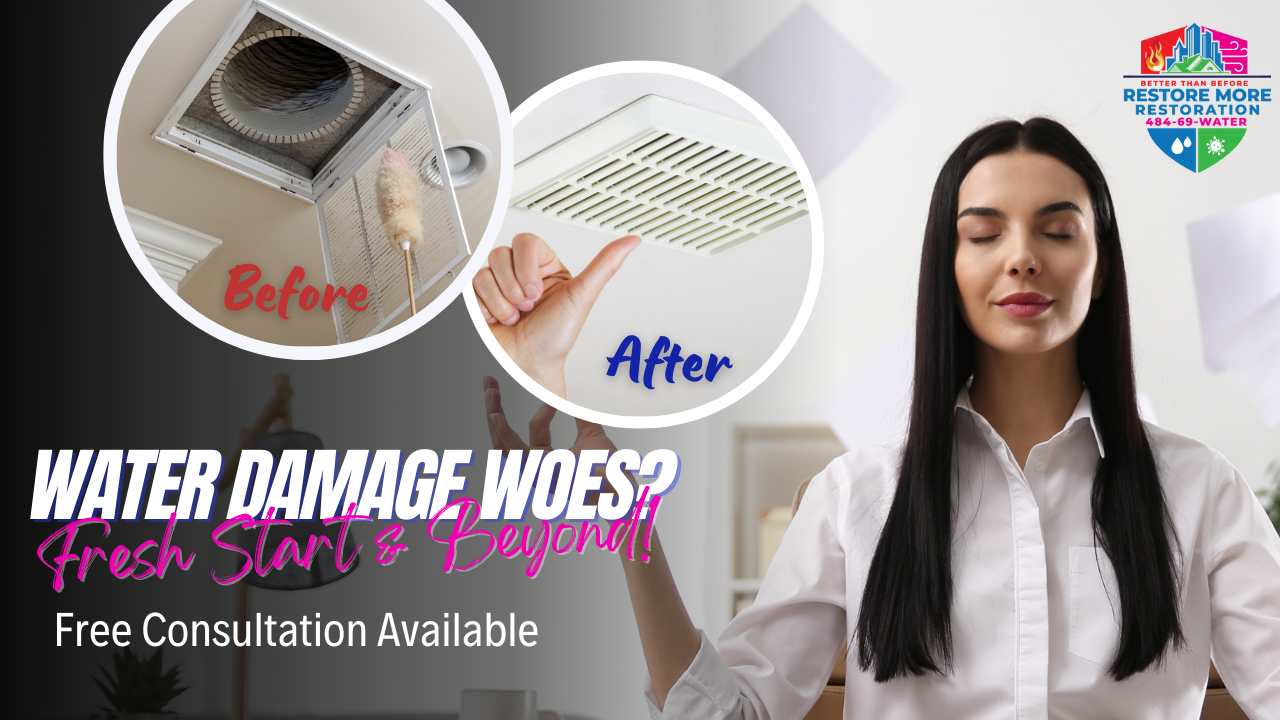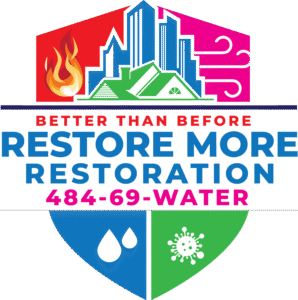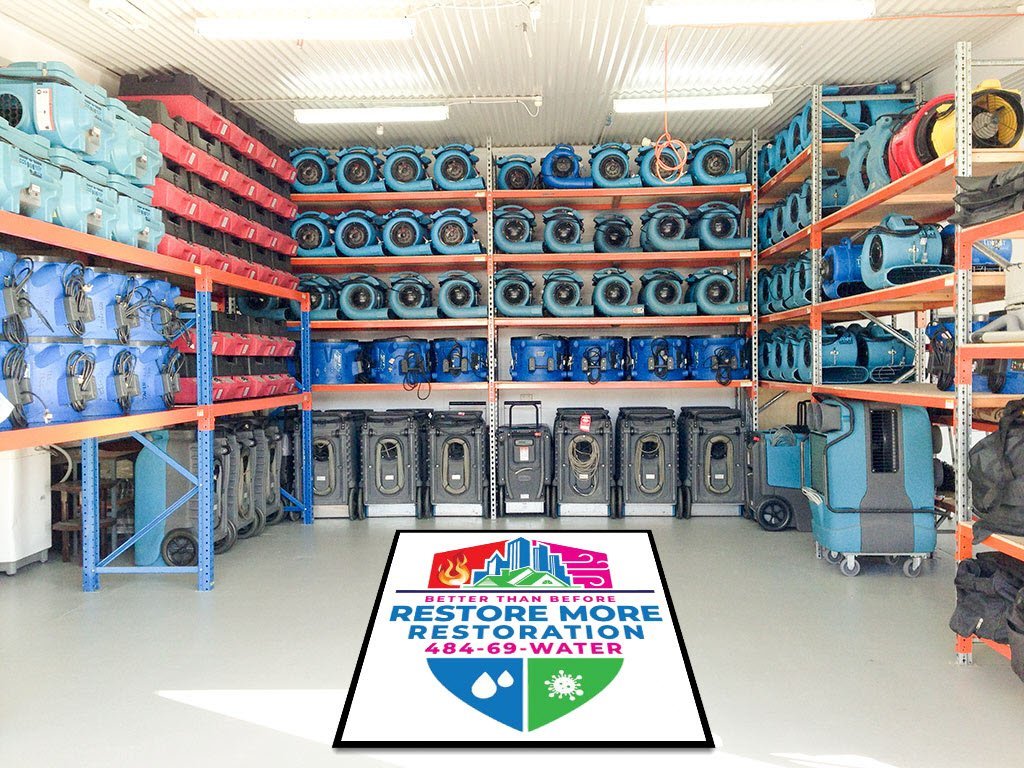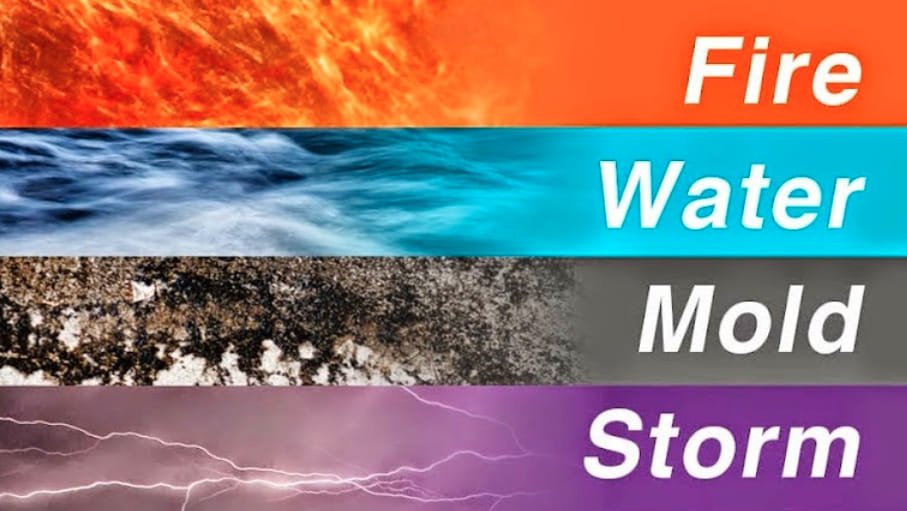Burst Pipe Cleanup Services in Garnet Valley, Pennsylvania
Burst pipe emergencies can cause devastating water damage in minutes, flooding homes and businesses with hundreds or thousands of gallons of water that can destroy flooring, furnishings, and structural elements while creating immediate safety hazards and long-term restoration challenges. When pipes fail in your Garnet Valley property—whether from freezing temperatures, aging infrastructure, or sudden pressure changes—every minute counts in preventing extensive damage and beginning the restoration process. Burst pipe situations demand immediate professional response with specialized water extraction equipment, rapid drying techniques, and comprehensive restoration services that address both the immediate flooding and the underlying plumbing issues that caused the failure.
At waterdamagecleanupgarnetvalleypa.com, we specialize in connecting Garnet Valley residents and businesses with expert burst pipe cleanup services. Our trusted partner, RestoreMore365, provides 24/7 emergency response for burst pipe situations with specialized teams equipped to handle rapid water extraction, emergency plumbing coordination, and comprehensive restoration services that get your property back to normal as quickly as possible while preventing secondary damage and ensuring complete recovery.
Understanding Burst Pipe Emergencies in Garnet Valley
Burst pipe emergencies in Garnet Valley can result from various causes and present unique challenges that require immediate professional intervention. According to the Insurance Institute for Business & Home Safety, burst pipes cause billions of dollars in property damage annually, with rapid professional response being the critical factor in minimizing damage and restoration costs.
Common Causes of Pipe Failures in Garnet Valley
Freezing Temperatures: Garnet Valley’s winter climate can cause pipes to freeze and burst, particularly in unheated areas, exterior walls, or properties with inadequate insulation. Frozen pipe failures often occur when temperatures drop rapidly or when heating systems fail during cold periods.
Aging Infrastructure: Many Garnet Valley properties feature plumbing systems that are decades old and may be approaching or exceeding their expected lifespan. Aging pipes can develop weaknesses, corrosion, or material failures that lead to sudden bursts without warning.
Water Pressure Issues: Sudden pressure changes in municipal water systems or pressure buildup from closed valves can cause pipe failures, particularly in older plumbing systems that may not be designed for modern pressure levels.
Corrosion and Material Degradation: Over time, pipes can develop corrosion, mineral buildup, or material degradation that weakens pipe walls and leads to failures. This is particularly common in areas with hard water or aggressive water chemistry.
Installation Issues: Improperly installed pipes, inadequate support, or poor joint connections can lead to failures over time as systems age and settle. These issues may not become apparent until years after installation.
Ground Movement: Soil settlement, freeze-thaw cycles, or other ground movement can stress underground pipes and cause failures in supply lines or sewer connections.
Types of Pipe Failures
Supply Line Bursts: Water supply line failures can release water under full municipal pressure, causing rapid flooding that can affect large areas quickly. These failures often occur in basements, crawl spaces, or within wall cavities.
Drain Line Failures: Drain line failures can cause sewage backups and contaminated water intrusion that requires specialized cleanup and decontamination procedures.
Fixture Connection Failures: Failures at fixture connections including toilets, sinks, and appliances can cause localized flooding that may seem minor but can cause significant damage if not addressed immediately.
Hot Water System Failures: Water heater connections, hot water supply lines, and heating system pipes can fail and cause flooding with hot water that creates additional safety hazards and restoration challenges.
Sprinkler System Failures: Fire sprinkler system pipe failures can cause extensive water damage throughout commercial and residential properties, often affecting multiple floors and areas simultaneously.
Immediate Response for Burst Pipe Emergencies
When burst pipe emergencies occur, immediate action is critical for minimizing damage and ensuring safety:
Emergency Safety Steps
Water Shut-Off: The first priority in any burst pipe emergency is stopping the water flow by shutting off the main water supply or individual fixture shut-offs if the main valve is not accessible.
Electrical Safety: Turn off electricity to affected areas immediately, particularly if water is present near electrical outlets, appliances, or electrical panels. Never enter areas with standing water if electrical hazards may be present.
Safety Evacuation: Ensure all occupants are safely away from affected areas, particularly if large amounts of water are present or if structural damage is possible.
Emergency Documentation: Begin documenting the damage immediately with photographs and videos for insurance purposes, but don’t delay calling for professional help to document comprehensively.
Professional Emergency Response
Immediate Professional Contact: Contact RestoreMore365 immediately when burst pipe emergencies occur. Their 24/7 emergency response capability ensures that professional help arrives quickly to begin water extraction and damage mitigation.
Emergency Plumbing Coordination: RestoreMore365 coordinates with emergency plumbing services to address the source of the pipe failure while beginning water extraction and restoration services.
Rapid Water Extraction: Professional water extraction begins immediately upon arrival, using powerful truck-mounted and portable extraction equipment to remove standing water and prevent additional damage.
Emergency Stabilization: Immediate stabilization measures including moisture control, air movement, and temporary protection prevent secondary damage while comprehensive restoration planning proceeds.
RestoreMore365’s Burst Pipe Cleanup Expertise
RestoreMore365 brings specialized expertise in burst pipe cleanup that addresses the unique challenges of plumbing-related water damage:
Rapid Emergency Response
24/7 Availability: RestoreMore365 maintains round-the-clock availability specifically for burst pipe emergencies, understanding that pipe failures don’t wait for convenient times and require immediate professional intervention.
Rapid Deployment: Emergency response teams can be deployed within 60-90 minutes of emergency calls, arriving with specialized equipment for immediate water extraction and damage mitigation.
Emergency Equipment: Response vehicles carry comprehensive water extraction equipment, emergency drying systems, and moisture detection technology necessary for immediate burst pipe response.
Plumbing Coordination: Established relationships with emergency plumbing services ensure rapid coordination to address pipe failures while restoration work begins simultaneously.
Specialized Burst Pipe Services
High-Volume Water Extraction: Powerful extraction equipment designed for rapid removal of large volumes of water that can result from burst pipe emergencies, including truck-mounted systems capable of extracting thousands of gallons quickly.
Emergency Drying Systems: Advanced drying equipment that can be deployed immediately to begin moisture removal and prevent secondary damage such as mold growth or structural deterioration.
Contamination Assessment: Professional assessment of water contamination levels, particularly important when drain lines or sewage systems are involved in pipe failures.
Structural Protection: Immediate protection of structural elements and building systems that may be affected by burst pipe flooding, including electrical systems, HVAC equipment, and flooring systems.
Advanced Technology for Burst Pipe Cleanup
Moisture Detection Technology: Advanced moisture detection equipment identifies hidden moisture in walls, floors, and structural elements that may not be apparent through visual inspection but could cause ongoing problems.
Thermal Imaging: Thermal imaging technology can identify moisture patterns and potential problem areas in building materials affected by burst pipe flooding.
Air Quality Management: Sophisticated air filtration systems maintain healthy air quality during restoration work and prevent contamination spread to unaffected areas.
Real-Time Monitoring: Continuous monitoring systems provide real-time data on drying progress and environmental conditions throughout the restoration process.
Burst Pipe Cleanup Process
RestoreMore365’s burst pipe cleanup process is designed to address the urgent nature of plumbing emergencies:
Emergency Assessment and Stabilization
Immediate Safety Evaluation: Comprehensive safety assessment addresses electrical hazards, structural concerns, contamination risks, and other safety issues specific to burst pipe situations.
Source Control Coordination: Coordination with plumbing professionals to ensure that pipe failures are properly repaired and that water sources are safely controlled before restoration begins.
Damage Documentation: Detailed documentation of all burst pipe damage including water extent, affected materials, and potential hidden damage for insurance and restoration planning purposes.
Emergency Stabilization: Immediate stabilization measures including water extraction, moisture control, and environmental management to prevent additional damage during restoration planning.
Rapid Water Extraction
High-Capacity Extraction: Powerful water extraction systems remove standing water quickly, including truck-mounted units capable of extracting large volumes rapidly and portable units for areas with limited access.
Complete Water Removal: Thorough removal of all standing water and moisture from affected areas, including water that may have penetrated into wall cavities, subfloors, or other hidden areas.
Contamination Management: Appropriate handling of contaminated water when burst pipes involve drain lines or sewage systems, including proper containment and disposal procedures.
Moisture Detection: Advanced moisture detection identifies all areas affected by burst pipe flooding, including hidden moisture that may not be apparent through visual inspection.
Structural Drying and Dehumidification
Advanced Drying Systems: Industrial drying equipment creates optimal conditions for moisture removal from building materials affected by burst pipe flooding, including dehumidifiers and air movement systems.
Scientific Drying Approach: Systematic drying approaches based on psychrometric principles ensure efficient moisture removal while preventing secondary damage to building materials.
Continuous Monitoring: Real-time monitoring of moisture levels, temperature, and humidity ensures that drying progresses effectively and that all affected materials reach appropriate moisture levels.
Environmental Control: Climate control systems maintain optimal drying conditions while protecting unaffected areas from moisture migration and maintaining occupant comfort when possible.
Material Assessment and Restoration
Salvageability Evaluation: Professional assessment of affected materials to determine what can be restored versus what requires removal and replacement, helping minimize restoration costs while ensuring complete recovery.
Selective Removal: Careful removal of materials that cannot be effectively restored, including insulation, drywall, flooring, and other porous materials that may retain moisture or contamination.
Content Protection: Specialized techniques for protecting and restoring personal belongings and furnishings affected by burst pipe flooding, including pack-out services when necessary.
Structural Repairs: Comprehensive structural repairs addressing any damage caused by burst pipe flooding, including subfloor replacement, wall reconstruction, and system restoration.
Complete Restoration and Prevention
Full Reconstruction: Complete reconstruction of affected areas to pre-loss condition or better, incorporating improvements that may help prevent future water damage.
System Upgrades: Coordination of plumbing system improvements that may help prevent future pipe failures, including insulation upgrades, pressure regulation, and monitoring systems.
Moisture Control: Implementation of moisture control measures that help prevent future problems and protect the restored property from moisture-related issues.
Final Inspection: Comprehensive final inspection ensures that all restoration work meets professional standards and that the property is ready for safe reoccupation.
Types of Burst Pipe Damage
Burst pipe emergencies can cause various types of damage that require different restoration approaches:
Immediate Water Damage
Flooring Damage: Burst pipes can cause immediate damage to all types of flooring including hardwood, carpet, tile, and laminate, often requiring rapid extraction and specialized drying or replacement.
Wall and Ceiling Damage: Water from burst pipes can affect walls and ceilings through direct contact or wicking action, potentially requiring drywall replacement and paint restoration.
Furniture and Content Damage: Personal belongings and furnishings can be damaged by burst pipe flooding, requiring specialized cleaning and restoration techniques or replacement when restoration is not feasible.
Electronic Equipment Damage: Electronic devices and appliances can be severely damaged by water exposure, often requiring specialized electronics restoration services or replacement.
Structural Damage
Subfloor Damage: Extensive water exposure can damage subfloor materials, requiring removal and replacement to prevent ongoing moisture problems and structural issues.
Framing Damage: Prolonged water exposure can affect wooden framing materials, potentially requiring structural repairs or replacement depending on the extent of moisture penetration.
Insulation Damage: Wet insulation typically requires removal and replacement as it cannot be effectively dried and may harbor mold growth or lose its insulating properties.
Foundation Concerns: Large volumes of water from burst pipes can affect foundation areas, particularly in basement situations where water may accumulate against foundation walls.
System Damage
Electrical System Impact: Water from burst pipes can affect electrical systems including outlets, switches, panels, and wiring that may require electrical system evaluation and repairs.
HVAC System Damage: Heating and cooling systems can be affected by burst pipe flooding, particularly when water reaches ductwork, equipment, or electrical components.
Plumbing System Issues: The burst pipe itself requires repair, but flooding may also affect other plumbing components including fixtures, connections, and related systems.
Appliance Damage: Water-using appliances and other equipment can be damaged by burst pipe flooding, requiring evaluation and potential replacement or restoration.
Prevention Strategies for Burst Pipe Emergencies
While not all pipe failures can be prevented, Garnet Valley property owners can take steps to reduce risks:
Winter Freeze Prevention
Pipe Insulation: Proper insulation of pipes in unheated areas, exterior walls, and crawl spaces helps prevent freezing during cold weather periods.
Heat Maintenance: Maintaining adequate heating in all areas of the property, including basements and crawl spaces, helps prevent pipe freezing during winter months.
Faucet Dripping: Allowing faucets to drip slightly during extreme cold periods helps maintain water movement and prevents freezing in supply lines.
Cabinet Door Opening: Opening cabinet doors under sinks allows warm air circulation around pipes in exterior walls during cold periods.
System Maintenance and Monitoring
Regular Inspections: Regular plumbing system inspections help identify potential problems before they become burst pipe emergencies, including signs of corrosion, leaks, or system stress.
Pressure Monitoring: Monitoring water pressure and installing pressure regulation systems helps prevent pressure-related pipe failures.
Leak Detection Systems: Installing water leak detection systems provides early warning of plumbing problems and can automatically shut off water supplies when leaks are detected.
Professional Maintenance: Regular professional plumbing maintenance helps ensure that systems remain in good condition and that potential problems are identified early.
System Upgrades and Improvements
Pipe Replacement: Replacing aging pipes before they fail helps prevent burst pipe emergencies and provides improved reliability and performance.
Shut-Off Valve Upgrades: Installing easily accessible shut-off valves allows rapid water control during emergencies and can minimize damage when failures occur.
Insulation Improvements: Upgrading insulation in areas where pipes are located helps prevent freezing and provides better protection during extreme weather.
Monitoring System Installation: Installing comprehensive monitoring systems provides early warning of problems and can automatically respond to prevent extensive damage.
Insurance Considerations for Burst Pipe Damage
Understanding insurance coverage for burst pipe damage helps ensure appropriate claim handling:
Homeowner’s Insurance Coverage
Sudden and Accidental Damage: Most homeowner’s insurance policies cover water damage from burst pipes when the damage is sudden and accidental, but understanding policy specifics is important.
Gradual Damage Exclusions: Insurance policies typically exclude damage from gradual leaks or long-term seepage, making rapid response to burst pipe emergencies important for coverage.
Pipe Repair vs. Damage Coverage: While insurance may cover damage caused by burst pipes, the cost of repairing or replacing the failed pipe itself may not be covered under standard policies.
Additional Living Expenses: Coverage for additional living expenses when homes are uninhabitable due to burst pipe damage helps offset temporary housing costs during restoration.
Claim Documentation and Processing
Immediate Documentation: RestoreMore365 provides immediate documentation of burst pipe damage that supports insurance claims and helps ensure appropriate coverage determination.
Mitigation Requirements: Insurance policies typically require property owners to take reasonable steps to mitigate damage, making professional restoration services important for claim protection.
Adjuster Coordination: Working directly with insurance adjusters to provide technical information about burst pipe damage and restoration requirements ensures appropriate claim handling.
Supplemental Claims: Managing supplemental claims when additional damage is discovered during restoration work or when initial estimates prove inadequate.
Commercial Insurance Considerations
Business Interruption: Commercial properties may have business interruption coverage that helps offset income losses during burst pipe restoration periods.
Equipment Coverage: Understanding coverage for damaged equipment and inventory that may be affected by burst pipe flooding.
Tenant Improvements: Coverage for tenant improvements and betterments that may be damaged by burst pipe flooding in commercial properties.
Liability Considerations: Understanding liability issues when burst pipe damage affects multiple tenants or adjacent properties.
Health and Safety Considerations
Burst pipe cleanup involves important health and safety considerations:
Immediate Safety Hazards
Electrical Hazards: Water from burst pipes creates immediate electrical hazards that require professional assessment and management to ensure safety.
Slip and Fall Hazards: Standing water and wet surfaces create slip and fall hazards that must be managed during cleanup and restoration work.
Structural Hazards: Large volumes of water can affect structural integrity, particularly in cases involving significant flooding or prolonged water exposure.
Contamination Risks: Burst pipes involving drain lines or sewage systems create contamination risks that require specialized handling and safety protocols.
Long-Term Health Considerations
Mold Prevention: Rapid professional response and thorough drying prevent mold growth that can cause serious health problems, particularly in humid environments.
Air Quality Management: Maintaining healthy indoor air quality during restoration work requires appropriate ventilation and filtration systems.
Moisture Control: Ensuring complete moisture removal prevents ongoing health risks from excessive humidity or hidden moisture problems.
Professional Safety Protocols
Personal Protective Equipment: RestoreMore365 technicians use appropriate personal protective equipment for burst pipe cleanup work, including respiratory protection when necessary.
Safety Training: Comprehensive safety training ensures that restoration work is performed safely in challenging burst pipe cleanup environments.
Health Monitoring: Ongoing health monitoring ensures that restoration work doesn’t create additional health risks for property occupants.
Advanced Burst Pipe Cleanup Technology
RestoreMore365 uses advanced technology specifically designed for burst pipe cleanup:
Rapid Extraction Technology
High-Capacity Extraction Systems: Truck-mounted extraction units capable of removing thousands of gallons of water quickly, essential for burst pipe emergencies involving large water volumes.
Portable Extraction Equipment: Portable extractors for areas where truck-mounted units cannot access, including upper floors, tight spaces, and areas with limited access.
Specialized Extraction Techniques: Different extraction approaches for different types of burst pipe situations, from clean water extraction to contaminated water handling.
Advanced Drying Systems
Industrial Dehumidification: Commercial-grade dehumidifiers designed for rapid moisture removal in burst pipe cleanup situations with high water volumes.
High-Velocity Air Movement: Strategic air movement systems that maximize drying efficiency and prevent secondary damage to unaffected areas.
Heat Drying Systems: Specialized heating systems that accelerate drying in challenging conditions or when rapid restoration is critical.
Monitoring and Detection Technology
Wireless Moisture Monitoring: Remote monitoring systems that provide continuous data on drying progress and allow for immediate adjustments to optimize efficiency.
Thermal Imaging Technology: Advanced thermal imaging that identifies hidden moisture and monitors drying progress in building materials.
Air Quality Monitoring: Continuous air quality monitoring ensures healthy conditions during restoration work and identifies potential contamination issues.
Specialized Burst Pipe Scenarios
RestoreMore365 provides specialized services for different types of burst pipe situations:
Frozen Pipe Failures
Emergency Thawing: Safe pipe thawing techniques that restore water flow while preventing additional damage from improper thawing methods.
Freeze Damage Assessment: Comprehensive evaluation of freeze damage including hidden damage that may not be immediately apparent.
Prevention Planning: Recommendations for preventing future freeze-related pipe failures through insulation, heating, and system improvements.
High-Pressure Failures
Pressure System Evaluation: Assessment of water pressure systems and recommendations for pressure regulation to prevent future failures.
Emergency Pressure Control: Immediate pressure control measures to prevent additional damage while repairs are completed.
System Upgrades: Coordination of pressure regulation system upgrades that help prevent future high-pressure failures.
Aging Infrastructure Failures
Comprehensive System Assessment: Evaluation of aging plumbing systems to identify additional areas at risk for failure.
Phased Replacement Planning: Development of phased replacement plans that address aging infrastructure while minimizing disruption and cost.
Emergency Coordination: Coordination with plumbing professionals for emergency repairs and long-term system improvements.
Conclusion
Burst pipe emergencies represent some of the most urgent and potentially devastating water damage situations that Garnet Valley property owners can face. The combination of rapid water release, immediate flooding, and time-sensitive restoration requirements demands professional burst pipe cleanup services that can respond immediately with specialized equipment and comprehensive restoration capabilities.
RestoreMore365’s expertise in burst pipe cleanup ensures that Garnet Valley residents and businesses receive the rapid response, advanced technology, and comprehensive services necessary for complete recovery from plumbing emergencies. Their understanding of burst pipe challenges, combined with 24/7 availability and proven restoration methods, provides the best possible outcomes for even the most severe burst pipe situations.
When burst pipe emergencies occur in your Garnet Valley property, don’t risk extensive damage by delaying professional response. Trust the burst pipe cleanup specialists who understand the urgency of plumbing emergencies and can provide the immediate, comprehensive solutions necessary for complete restoration and damage prevention.
For more information about related services, visit our pages on emergency water damage, basement water damage, water damage restoration, flood restoration, and our comprehensive FAQ section. These resources provide additional information about restoration processes and emergency preparedness that can help protect your valuable Garnet Valley property.
Remember, burst pipe emergencies require immediate professional attention to minimize damage and ensure complete restoration. Trust RestoreMore365 for burst pipe cleanup services that provide rapid response, advanced technology, and comprehensive restoration when every minute counts.




